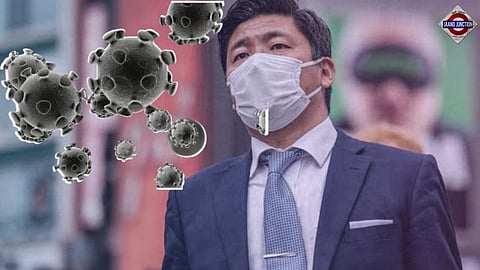

Post-pandemic tourists to Japan are increasingly snapping up folk crafts and jewellery, while sales of cosmetics and medicines has waned, reflecting the changing demographics of visitors as more people from Europe show up and China’s citizens stay at home.
Average spending on traditional handicrafts per visitor was ¥13,338 ($92) in the July-September quarter, up 80% from the same period in 2019, according to the Japan Tourism Agency, extending a trend that started in early 2023. Sales of cosmetics shrank 30% over the same timeframe.
Although inbound tourism has been one of the few bright spots in Japan’s patchy economic recovery, drugstores and retailers can no longer count on busloads of travelers from China clearing out shelves, a common sight up until 2019. Fewer spenders from the mainland also reflect the slowing economy there, despite the weaker yen making tours to the archipelago more affordable.
“I wanted something Japanese and found this store on the internet,” Daniel Forrester, visiting from New York, said as he paid ¥90,000 for a lacquered box at Traditional Crafts Aoyama Square. “I’m going to use this to store pens in my office.”
Duty-free sales at the shop during April through October are up about 20% from pre-pandemic levels, according to Kazuhiko Asakawa, the store’s manager. On the shelves holding 7,000 to 8,000 items are iron kettles, ceramics and other hand-made merchandise. “We’re seeing more travelers from places such as Mexico, Brazil and Poland since around the end of 2022,” he said.
Chinese tourists now make up about 10% of the total number of visitors, compared with 30% in 2019, according to the Japan National Tourism Organization. Travelers from the US, Canada, Germany and other countries, meanwhile, have increased.
Some product categories are enjoying a boom, thanks to the changing tourism demographics. Ito-ya Ltd., which operates a storied shop in Ginza selling pens, notebooks and other stationery, has seen duty-free sales more than double from before the pandemic. Many customers discover the store the via social media, according to manager Atsushi Fujiki. “We seem to be becoming a destination,” he said.
Sinduja Venkat, who was recently visiting from India with her family, was among the shoppers at Ito-ya looking at at pens, sketchbooks and other products. “I want to buy stationery for my children to use at school,” she said.
Despite the growth of consumption by tourists in Japan, the country still lags behind others in the region when it comes to total spending per visitor, which stood at $2,411 in 2022, according to the UN World Tourism Organization. That compares with $5,524 per tourist in Hong Kong and $6,526 in Australia, which stands at the top of the list.
"Japan is losing ground to other countries when it comes to entertainment and services,” said Noriko Yagasaki, professor at Tokyo Woman’s Christian University. There’s a lack of guides who can accompany tourists, with demand outstripping labor supply, she said.
Spending by visitors can be boosted by focusing not just on selling good, but providing experiences, Yagasaki said.
Even if spending remains low, there’s also the view that more tourists will help lift economic activity anyway. But that’s also difficult, given the labor shortage in the industry. The Japanese inn and hotel sector reported the highest-ever level of staffing shortages, according to an October survey by Teikoku Databank.
“While the number of visitors is important, it could become unmanageable,” Yagasaki said. “There’s a need to focus on improving the quality of services in the coming years.”
